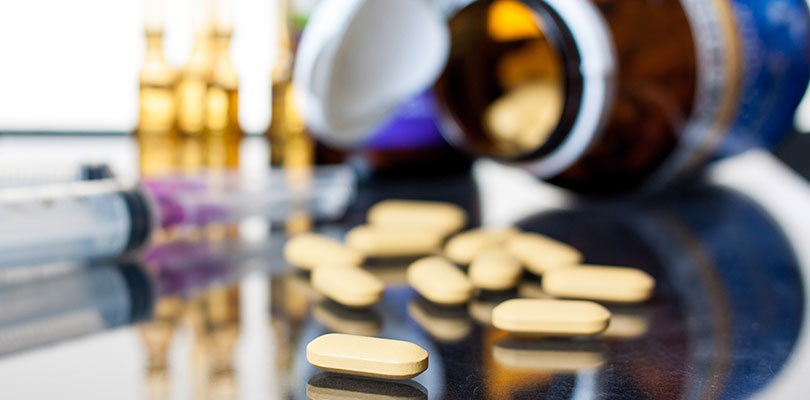Diabetes During Pregnancy
Diabetes is a health condition that affects how the body processes blood sugar, or glucose. There are various types of diabetes. The most common is type 2 diabetes. This type of diabetes is characterized by insulin resistance, meaning that the body does not not respond well to insulin. Type 1 diabetes is an autoimmune disease that ultimately causes a complete lack of insulin and a person with type 1 diabetes requires endogenous insulin for survival. Gestational diabetes (GDM) is a type of diabetes pregnancy.
Symptoms of diabetes typically do not develop until glucose levels are quite high for extended periods of time. These symptoms include:
- Increased thirst
- Increased urination
- Extreme hunger
- Frequent infections (often skin infections and vaginal yeast infections)
- Unexplained weight loss
- Slow healing sores
- Presence of ketones in the urine
- Irritability
- Fatigue
- Blurry vision
What Is Gestational Diabetes?
Pregnancy causes many hormone fluctuations. Most of these hormone fluctuations are due to the placenta, which sustains pregnancy. Unfortunately, the hormones can cause insulin resistance.
It is not just people with GDM who are insulin resistant; everyone is more insulin resistant during pregnancy. Fortunately, our bodies are able to produce enough insulin to overcome insulin resistance. However, if the pancreas is unable to keep up, excess glucose stays in the bloodstream because the insulin is unable to move the glucose to the cells and GDM develops.
Gestational Diabetes Causes
Researchers do not know why GDM develops. They do believe that carrying excess weight prior to pregnancy may play a role.
Other risk factors that may impact the development of GDM include:
- Lack of physical activity
- Having prediabetes
- Having had gestational diabetes in other pregnancies
- Having polycystic ovarian syndrome (PCOS), which is a condition that causes insulin resistance
- Having a family member with diabetes
- Having previously delivered a baby that weighed more than 9 pounds (4.1 kilograms)
- Certain ethnicities carry a higher likelihood of developing GDM; these include being African American, American Indian, Asian American and Pacific Islander
Gestational Diabetes Symptoms
It is rare that GDM causes any symptoms. If symptoms do develop, it is likely because glucose levels are excessively high. The most common symptoms to develop are increased thirst and increased urination.
Other symptoms include:
- Fatigue
- Nausea
- Blurred vision
- Vaginal infections
This article will go over some of the best and worst carbs for diabetics to help you keep your blood sugar levels under control.
Gestational Diabetes Treatment
Treatment of GDM focuses on lifestyle modifications and glucose monitoring, then medication if necessary.
Lifestyle modifications include eating a healthy diet and getting plenty of activity. Your doctor will likely recommend that you visit with a certified diabetes educator (CDE) and a registered dietitian (RD). Seeing a CDE and an RD will help you learn how to monitor your glucose, eat a healthy diet that keeps your glucose levels steady, and how to get the recommended activity. A CDE can also teach you how to take insulin, if necessary.
Even if you are eating a healthy diet prior to your GDM diagnosis, you will likely need to make modifications. For example, you may need to eat more than what you are used to in order to keep your glucose levels steady. However, you may need to eat less carbohydrates or you may need to stagger them throughout the day
You’ll also learn how to monitor your glucose and you will probably need to do it much more than what you would like. Initially, you will have to check your glucose first thing in the morning, then one to two hours after each meal. This helps your provider determine if your body is doing what it needs to be doing, or if you need to add insulin.
Some providers may prescribe oral medications, but many prescribe insulin. If you are prescribed insulin, you will be taught how to administer it, as well as how to treat hypoglycemia. Try to remember that this is a temporary treatment. Most people have a rapid normalization of glucose after their baby is born and the placenta is birthed.
Can Gestational Diabetes Be Avoided?
Yes and no. Sometimes it is inevitable. Pregnancy can do crazy things to the body and sometimes, despite the best of intentions and the healthiest habits, GDM will develop.
However, developing healthy habits can certainly lower the risk of developing GDM. Adopting healthy lifestyle habits after having GDM can also reduce the likelihood of developing type 2 diabetes and GDM in later pregnancies.
The following habits can reduce the risk of developing GDM:
- Eat a healthy diet. Foods that are high in fiber, low in fat and calories are recommended. Examples include fruits, vegetables and whole grains.
- Get moving. Aim for 30 minutes of activity on most days of the week. Walking, biking, swimming, whatever activity gets you moving.
- Start pregnancy at a healthy weight. If you need to lose weight, try to lose it before getting pregnant to lessen the risk of developing GDM.
- Don’t gain more weight than what is recommended by your healthcare provider. Gaining too much weight ups your risk of developing GDM.
When to See a Doctor
If you are pregnant and believe you show GDM symptoms, make sure to talk to your doctor about it so they can start you on the right treatment method.







